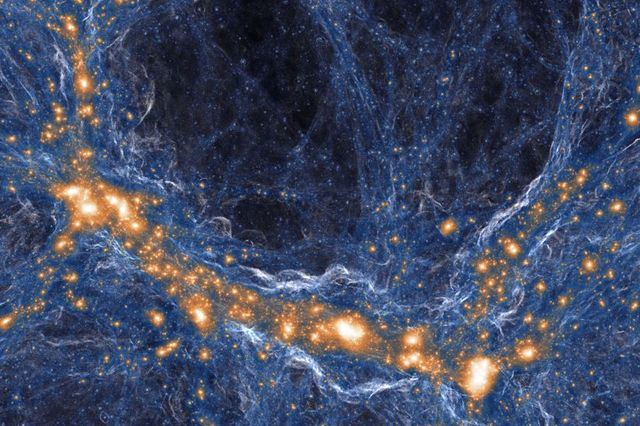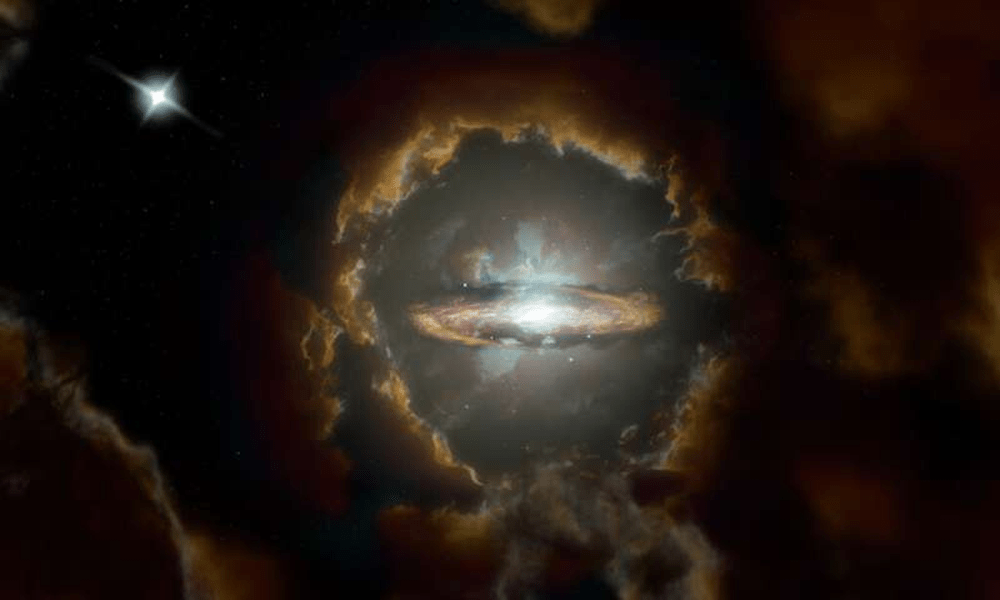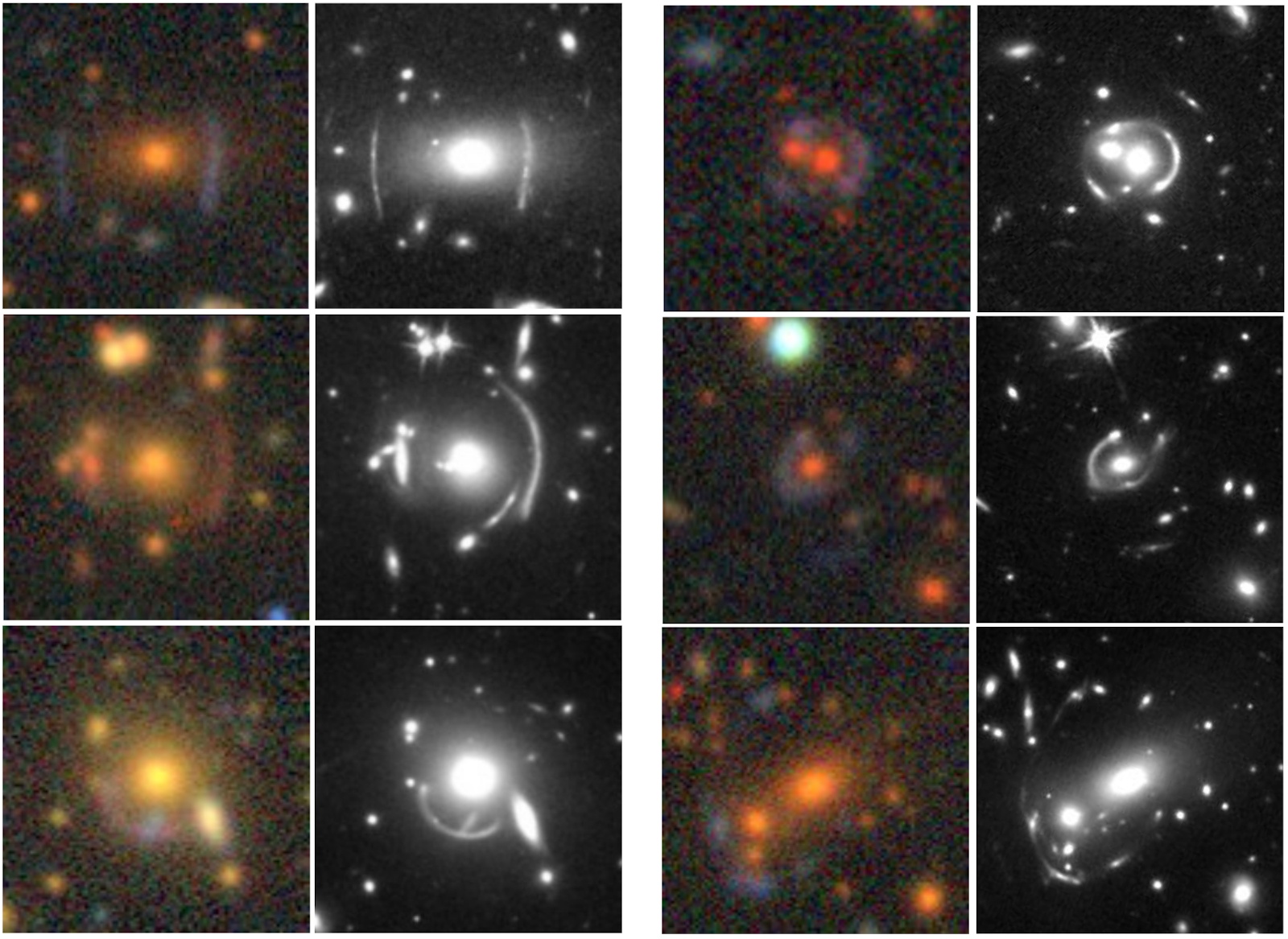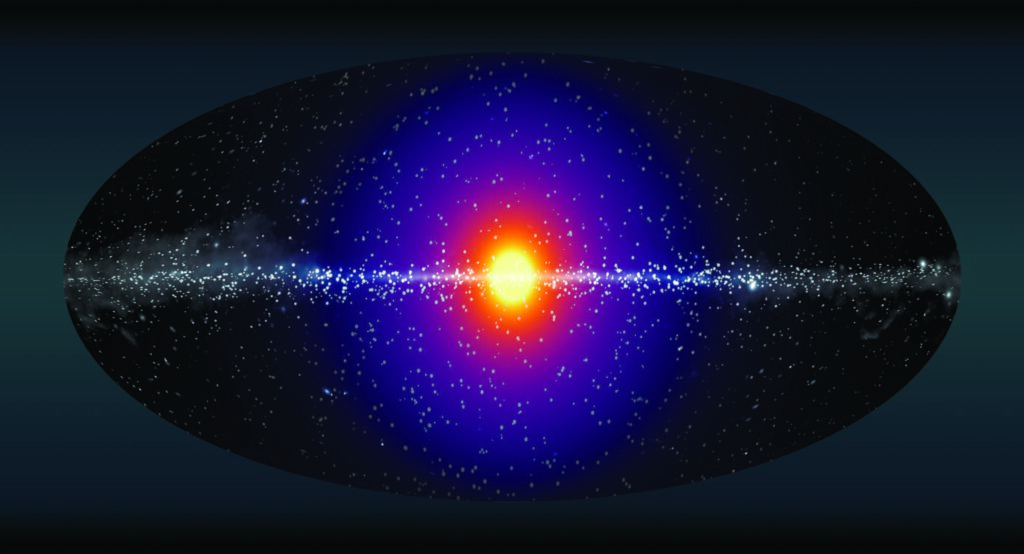At the Science Gallery of Trinity College Dublin, a beautiful work of art is capturing the imagination of people all over the world. It’s called “Dark Distortions,” a work of interactive art by Dutch artist Thijs Biersteker of Woven Studio. Inspired by the ESA’s forthcoming Euclid mission, a visible to near-infrared space telescope that will launch sometime in 2022 to study the mysterious nature of Dark Matter.
Continue reading “Art Installation that Demonstrates How Dark Matter Bends Light with Gravity”A Tabletop-sized Experiment Could Help in the Search for Dark Matter

Dark matter is one of the least understood aspects in physics. The evidence for dark matter is from its gravitational influence on galactic scales which cannot be explained by the presence of conventional matter. Despite its large gravitational interactions, it is notoriously difficult to learn about dark matter as it does not interact with electromagnetic fields, hence the name of “dark” matter.
But just because it is difficult to get it to interact with anything on the electromagnetic spectrum does not mean it is impossible to detect other feeble interactions it may have. A team of theoretical physicists from Caltech have recently proposed a novel type of experiment that may just hold the key to understanding dark matter with specific types of interactions.
Continue reading “A Tabletop-sized Experiment Could Help in the Search for Dark Matter”There’s no evidence that dark matter interacts with any other force but gravity

Most of the universe is made of one of two kinds of mysterious substances, called dark matter and dark energy. From all the evidence, these two cosmic components only interact with “normal” matter through the gravitational force. And a recent nuclear experiment reveals no presence of any dark contamination in the bonds between atomic nuclei to a level twenty times better than previously recorded.
Continue reading “There’s no evidence that dark matter interacts with any other force but gravity”Japanese Dark Matter Detector is Seeing a “Surprising Excess of Events”
Dark matter is notoriously difficult to detect. So difficult that we haven’t detected it yet. Evidence for dark matter can be seen in everything from the warping of light near galaxies to the way galaxies cluster together. We are pretty sure dark matter is real, but we also know it can’t be made of any type of particle we currently know. But a new study has found some interesting data that could be evidence of dark matter, or not.
Continue reading “Japanese Dark Matter Detector is Seeing a “Surprising Excess of Events””A Massive Rotating Disc Discovered in the Early Universe

If we want to understand how the Universe evolves, we have to understand how its large structures form and evolve. That’s why astronomers study galaxy formation. Galaxies are enormous structures of stars, planets, gas, dust, and dark matter, and understanding how they form is critical to understanding the Universe itself.
In 2017, astronomers working with ALMA (Atacama Large Millimeter/sub-millimeter Array) discovered an ancient galaxy. This massive rotating disk galaxy was born when the Universe was only about 1.5 billion years old. According to the most accepted understanding of how galaxies form and evolve, it shouldn’t exist.
But there it is.
Continue reading “A Massive Rotating Disc Discovered in the Early Universe”Hundreds of New Gravitational Lenses Discovered to Help Study the Distant Universe

General relativity tells us that everything, even light, is affected by the mass of an object. When a beam of light passes near a large mass, its path is deflected. This shift in the direction of light is known as gravitational lensing, and it was one of the first confirmed effects of Einstein’s theory.
Continue reading “Hundreds of New Gravitational Lenses Discovered to Help Study the Distant Universe”Decaying Dark Matter Should be Visible Here in the Milky Way as a Halo Around the Galaxy

Astronomers are very sure that dark matter exists, but they’re not sure at all what it’s made of.
The problem is that it isn’t just dark, it’s invisible. As far as we know, dark matter doesn’t emit light, absorb light, reflect light, refract light, scatter light, diffract light, or really have anything to do with light at all. This makes it hard to study. We know that dark matter exists, however, through its gravitational effects. Even though it’s invisible, it still has mass, and so the dark matter in our universe (which, by the way, makes up 85% of all the mass in the cosmos) can affect the motions of normal (or light-interacting) matter, like stars and galaxies.
Continue reading “Decaying Dark Matter Should be Visible Here in the Milky Way as a Halo Around the Galaxy”Slime Mold Grows the Same as the Large Scale Structure of the Universe

Matter in the Universe is not distributed equally. It’s dominated by super-clusters and the filaments of matter that string them together, surrounded by huge voids. Galaxy super-clusters are at the top of the hierarchy. Inside those is everything else: galaxy groups and clusters, individual galaxies, and solar systems. This hierarchical structure is called the “Cosmic Web.”
But how and why did the Universe take this form?
Continue reading “Slime Mold Grows the Same as the Large Scale Structure of the Universe”Is the “D-star Hexaquark” the Dark Matter Particle?
Since the 1960s, astronomers have theorized that all the visible matter in the Universe (aka. baryonic or “luminous matter) constitutes just a small fraction of what’s actually there. In order for the predominant and time-tested theory of gravity to work (as defined by General Relativity), scientists have had to postulate that roughly 85% of the mass in the Universe consists of “Dark Matter”.
Despite many decades of study, scientists have yet to find any direct evidence of Dark Matter and the constituent particle and its origins remain a mystery. However, a team of physicists from the University of York in the UK has proposed a new candidate particle that was just recently discovered. Known as the d-star hexaquark, this particle could have formed the “Dark Matter” in the Universe during the Big Bang.
Continue reading “Is the “D-star Hexaquark” the Dark Matter Particle?”Astronomers Simulated How the Universe Would Look Without Dark Matter
Since the 1960s, there has been a general consensus among astronomers and cosmologists that the majority of the Universe is made up of an invisible, mysterious mass (known as Dark Matter). While scientists still haven’t identified the candidate particle that makes up this mass, indirect tests and simulations have shown that Dark Matter must exist in order for the Universe to be the way it is.
In a fascinating twist, a team of European researchers conducted a simulation that looked at a Universe without Dark Matter. Using an alternative theory known as MOdified Newtonian Dynamics (MOND), the team created a computer simulation in which the galaxies were actually very similar to what we see in the Universe today. These findings could help to resolve one of the most enduring mysteries of modern cosmology.
Continue reading “Astronomers Simulated How the Universe Would Look Without Dark Matter”



